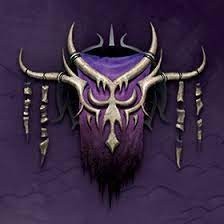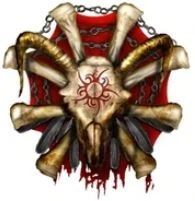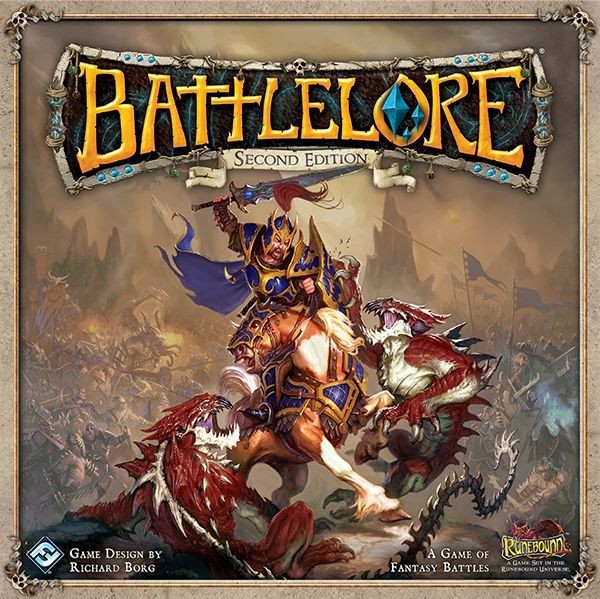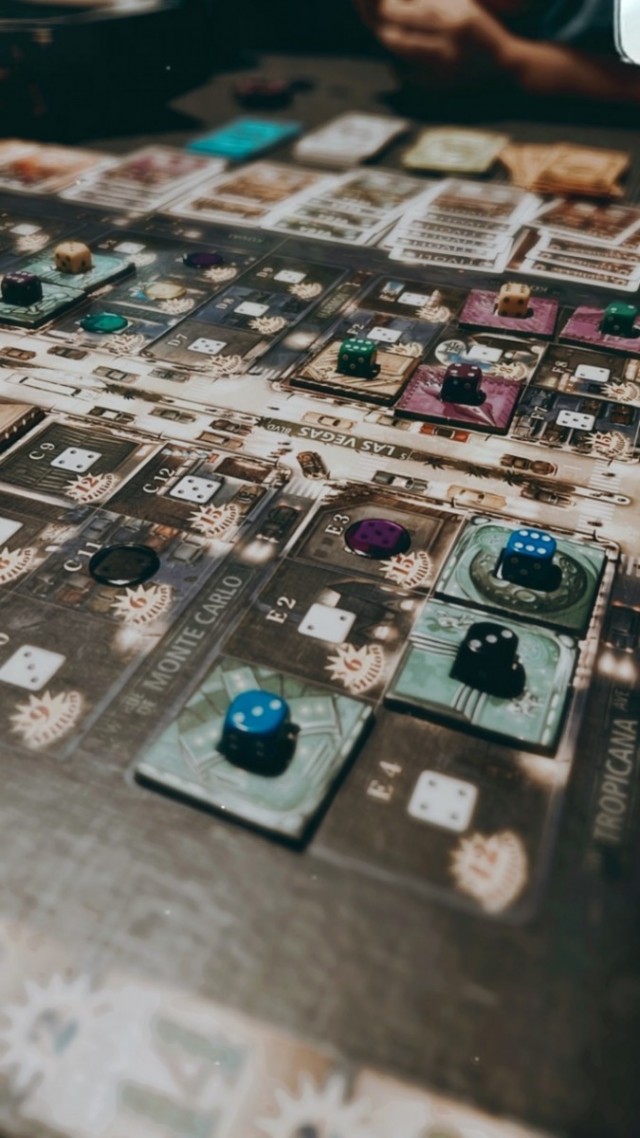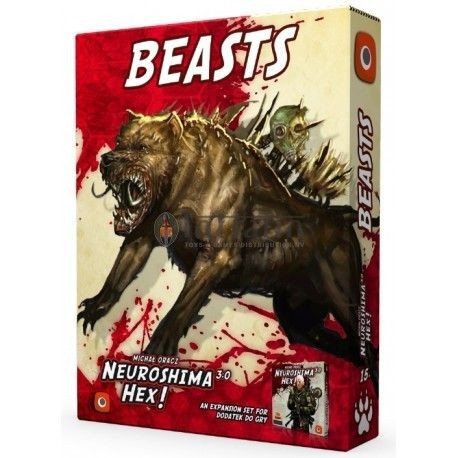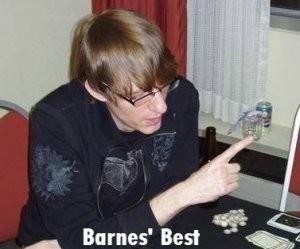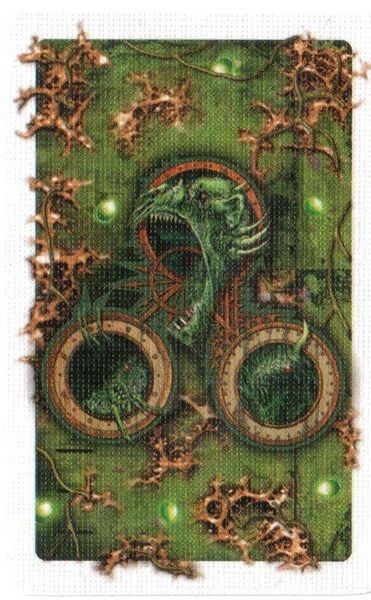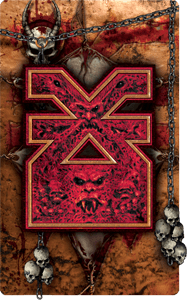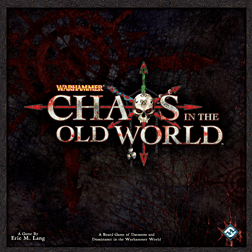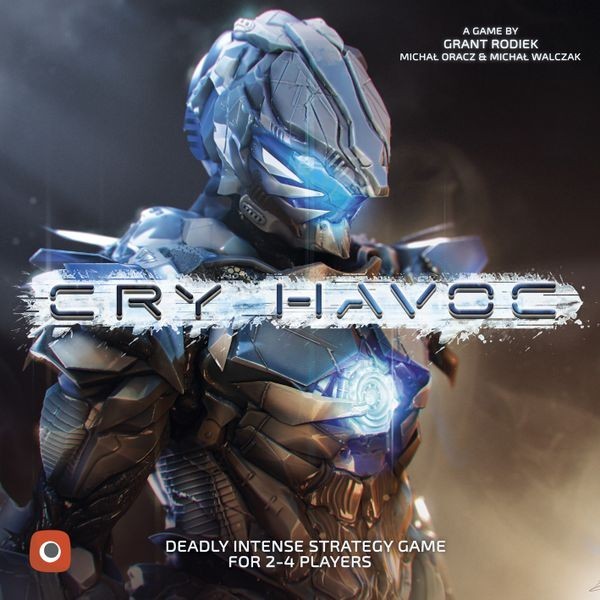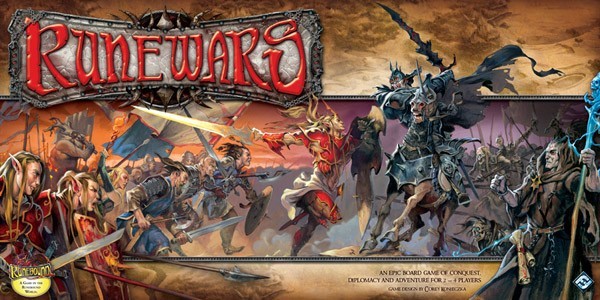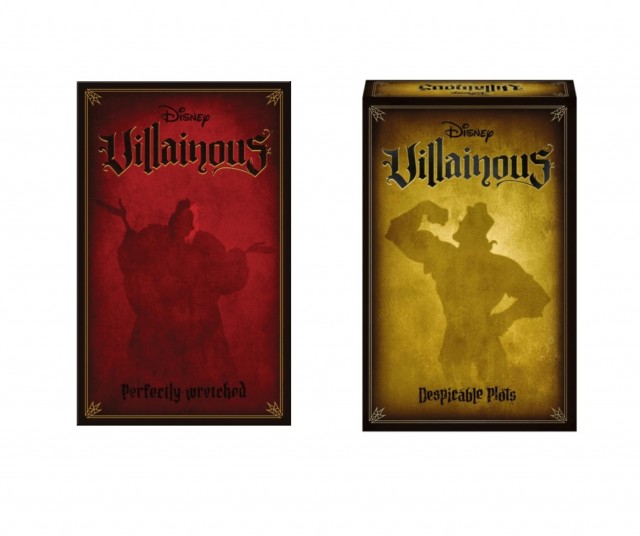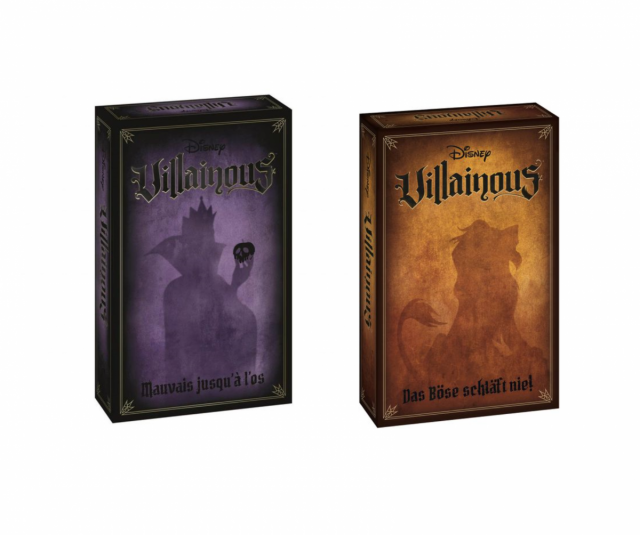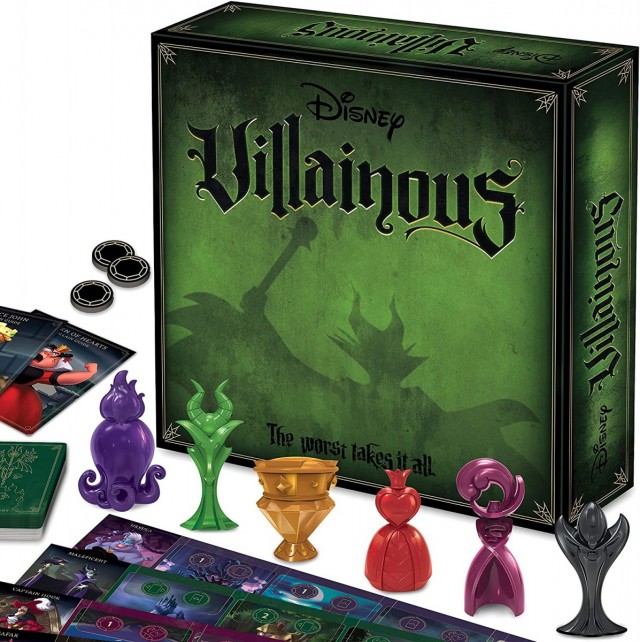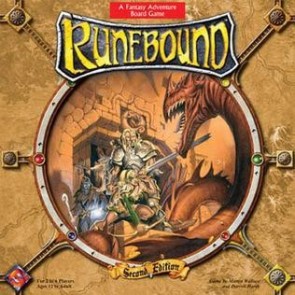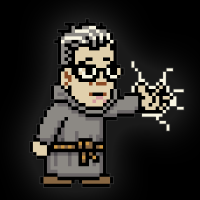Often derided for the "generic fantasy" of its setting, Runebound was the adventure game that may have opened the door to the modern era of legacies.
I own everything ever released for Runebound (As with everything that follows, I'm talking about 2nd Edition; 1st Edition existed for less than a year before being revised.) That's 28 different expansions; some of which were just deck enhancers (artifacts and/or encounters to flesh out the base set's offerings); some of which are wholly niche overlays for the different player roles (the class decks); and some of which are scenarios that largely just change the end goal, but others which change the way the whole game is approached. But no matter if the world as you knew it has ended (The Cataclysm) or if you're adventuring from the polar caps (The Frozen Wastes) to the blazing desert (Sands of Al-Kalim), you're still in Terrinoth and mechanically it's still Runebound. It's that flexibility and malleability of both game system and setting that I think has made it last in the minds of much of its audience.
One of the main complaints lodged against Runebound and Terrinoth, in general, is that it's "generic fantasy". There is no central theme that sets it apart from the standard Tolkien clone. And it's true. Terrinoth is all elegant forest elves, straight-laced humans, demon-crazed barbarians, undead, dragons, and a few orcs and dwarves mixed in. Alongside them are creatures unique to Terrinoth (Razorwings, Ferrox, Bane Spiders, etc.) but which don't really deviate from the norm, as it were. This ain't Jorune from (way, way) back in the day. When comparing Runebound to the game that is its closest (and most famous) parallel- Talisman -you can line them both up as being pretty bog-standard, thematically. The only edge that the latter had was nostalgia because, mechanically, Runebound is the significantly better game.
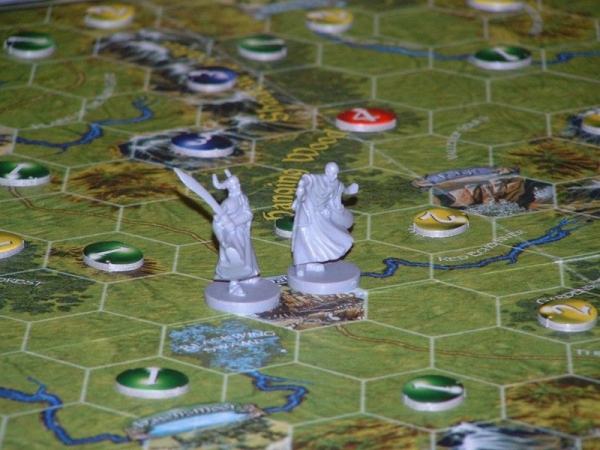
The most basic element is the dice in hand: Runebound uses d10s as opposed to the d6 of Talisman. That alone allows for both a greater range of outcomes in combat/skill tests/challenges/whathaveyou, but also in the design of those elements. You have greater variability in the level of challenges which can be tailored to present more variety in actual gameplay. Plus, Runebound has three traits for combat and tests (Mind/Range, Body/Melee, Spirit/Magic), as opposed to the two of Talisman. And, at the most basic level, despite it still being a roll-and-move situation, just like Talisman, there are more varied results on the movement dice and greater freedom of where to go around the board. Combine that with the ability to select an adventure level that individual players feel ready to deal with (as opposed to simply drawing the dragon off the top of the deck and dying in your first turn (fun!)), and Runebound is simply the sounder choice for allowing players to engage that essence of the game: adventure. This was, I think, designer Martin Wallace's intent: sound mechanics that allow for a plethora of choices, even if packaged in a familiar setting.
But those two elements set up a potential conflict: If Terrinoth is as milquetoast as many say, is it fun to be adventuring through Bog-Standard Land? Given that the game sold well and the setting expanded into two editions of Descent, Runewars, Runewars Miniatures, Rune Age, Battlelore 2nd Ed., and another edition of Runebound, I submit that the answer has to be: "Yes." Is it a mindbending experience into a whole new concept of fantasy literature? No. But, then again, neither is Gloomhaven. On the downside, among the mix of Challenges (stuff you fight), Encounters (stuff you do), and Events (stuff that affects the whole board/game), almost none of them are tailored to any area on the map except the cities, occasionally. For example, you'll find Encounters that cite Forge or Tamalir as part of their conditions for completion, but nothing similar exists for the Shadow Peaks or the Whispering Forest or the Bitter Downs. Those are just fanciful names on the map. That kind of flavor incorporation had to wait for the large expansions (Island of Dread, etc.), which emphasized that kind of questing approach.
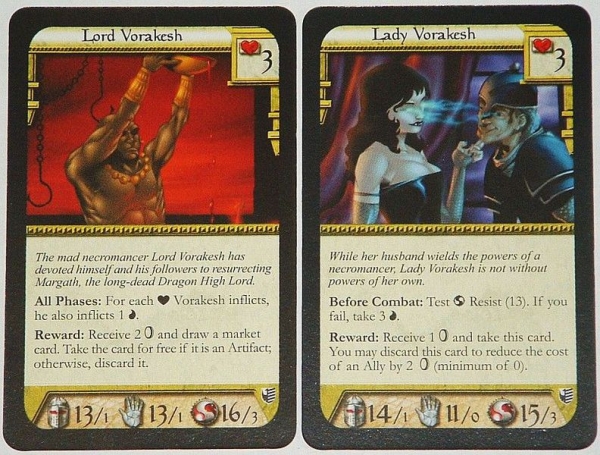
However, there are elements of the world that do carry over from the main game and throughout the various scenario expansions (4 large, 6 small.) One of the most prominent is the Priesthood of Kellos, which is one of the central aspects of the small Avatars of Kelnov expansion, but also shows up as (sigh) crusaders in Sands of Al-Kalim and elsewhere, for example. Similarly, the necromancer Vorakesh, foremost lieutenant of High Dragon Lord Margath (the final boss in the base game) is referenced many times throughout both the original cards and the expansions... which is kind of odd, given that Vorakesh himself is only a yellow (second level) Challenge in the game, so you can often run into things connected to him that are more fearsome than he is. Given the presence of Margath, there is also a regular theme of dragons, in both regular and hybrid human form, that is present in the base game.
One aspect that defies "typical" fantasy is the selection of different types of heroes. Of the 41 total in the game and all expansions, 1/3 of them are represented as women. That's not spectacular, but it's certainly a step forward from most of its ilk published around that time. Furthermore, the variety of species is more interesting, with only three elves, five orcs, and three dwarves represented, but alongside a lizardman, a yeti, a minotaur, a snow sprite, an undead, and several other unusual entries. In fact, orcs and dwarves are far better represented in the list of heroes than in the encounters out in the world. Despite the presence of places like Forge (clearly intended to be the standard dwarven city (in the mountains, named appropriately)), suggesting that Terrinoth is a Tolkien knockoff doesn't always quite live up to examination. Similarly, the player roles are split fairly evenly between wizard (13), warrior (13), and rogue (10), in true Diablo style, with a few more in the "hard to define" category (like Red Scorpion, Kirga, and Annen the Trailblazer.) That breakdown roughly conforms to a focus on Magic/Spirit, Melee/Body, and Ranged/Mind combat/tests, respectively, but there are variations even within those identities. Battlemage Jaes, for example, excels in both melee and magic, but moreso the latter. Similarly, Vyrah the Falconer is almost as adept at melee as he is at ranged combat.
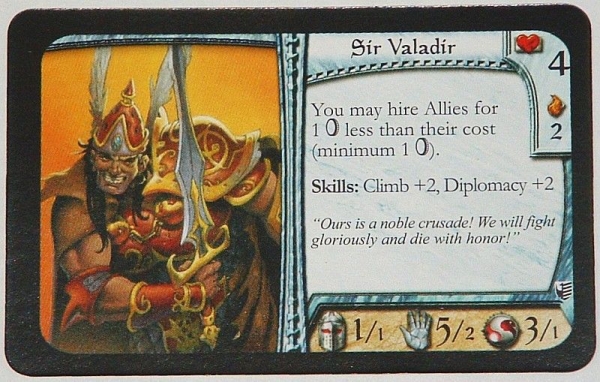
Also, character skills are often important in determining what type of playstyle they possess. Jump and Climb are obvious and can be exercised frequently throughout the adventure card decks. But skills like Diplomacy and Lore, such as those possessed by Andira Runehand, can be just as prominent, not only in dealing with Encounters, but also against many Challenges. One thing to keep in mind is the importance of Stamina. Just as in Descent, Stamina is a resource to be used. If you don't use it, you're not maximizing your opportunities. A case in point is how many hero abilities come at the cost of Exhaustion counters. Some of them are kind of ancillary benefits. Aurim the Sorcerer can skip the Melee phase in combat by taking 1 Exhaustion, for example. Others are tied directly into the character's identity. Eliam the Dervish can keep swinging with his best trait (Melee) by spending Exhaustion. But sometimes, as with most character-driven, skill-based games (think Heroes of the Storm if you've ever played), passive abilities are what you want. Bogran the Shadow automatically succeeds at any escape tests. That may not seem great early on, but when you get into those blue and red Challenges, late in the game, when you're hauling around some nice gear that you don't want to lose and you draw something overwhelming, skittering away might be the best option. Similarly, Ispher heals 1 Wound at that start of each of his turns. That's good no matter where or when.
Speaking of nice gear, as with most adventure games, one of the more important features is the fat lootz. Runebound does not let one down in this respect. Rather than just depending on a random draw, Runebound actually gives you something of a menu, in that you're not pulling magic swords off of dead Ferrox. You're getting cash, which can then be exchanged for goods and services(!), meaning magical stuff/friends and healing. Each city has a Market stack that shows what's on offer in those locations, which encourages basic strategies of taking on a certain level of Challenges nearby in order to accumulate the cash needed for an item you really want. No more drawing the Runesword and simply winning the game. Now you have to work for it and, uh, get there first. Because the Market deck becomes quite large with all expansions included, we've gotten in the habit of using the Bazaar rules from BGG, which split up the deck into 4 categories: armor, weapons, allies, and magic items. That way, people don't have to constantly be churning items (since you're limited as to what you can carry of each) if something useful isn't showing up in any city's Market stack. This approach also tends to speed the game along a bit, since heroes can better shape their gear strategy and become more adept at taking down the tougher Challenges.
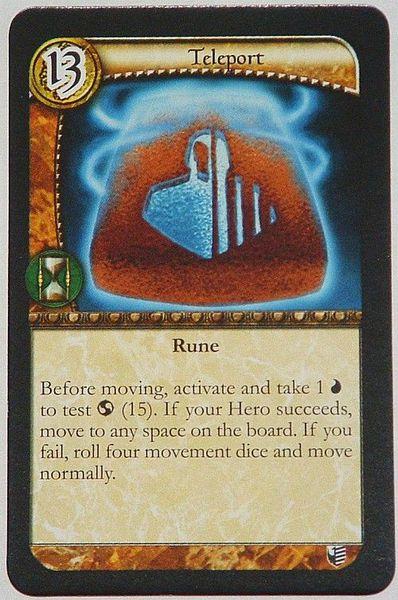
The lootz from those Market card expansions also incorporate a little of that flavor that is absent from some of the adventure cards but still mostly around the cities, where you have things like the Helm of Frostgate and the Waraxe of Dawnsmoor, the Vestments of Kellos and the Chalice of Tamalir, the Ram of Nerekhall and the Unicorn of Forge. The magic item stack is where you'll also find the namesake runes in all shapes and forms, from the ones that burn your enemies (Immolate) to the ones that keep you in the money (Everfull Purse.) As most of the final enemies/red Challenges in the base adventure also function as these runes once you've slain them, there's at least one more consistent theme that isn't entirely routine (runes instead of rings...?) In our games, most people have accepted the prominence of allies (more attacks in different phases, plus serving as blocking dummies) and armor (keeping oneself alive to keep adventurin' is key.) But being able to advance more quickly and knock off higher challenges is often the province of weapon and runes (and allies), so you can't ignore the other decks. Of course, the aforementioned occasional requirement to "get there first" brings us to the question of PvP, which is as present here as it is in Talisman.
Runebound is a competitive game. The object in the base adventure is to kill Lord Margath before anyone else does. Doing that can be enabled by taking a really good item off someone else (two players in my group will forever hold a mild grudge over the Rage Blade) or simply making it harder for them to progress. Consequently, you can interact with any other player in the same space if you choose to do so. It could be a negotiation and a trade. Or it could be full-on assault. Fantasy worlds are like that (Just read the news...) Combat is handled the same as it is against Challenges (ranged, melee, magic; before combat effects as applicable), except that the defender can't try to escape. Howevah, as noted earlier, the map of Terrinoth allows for much greater freedom of movement than the enclosed rectangle of Talisman, so it's usually not extraordinarily difficult to avoid other players if you choose to. The complicated time is when there are only a few blue or red adventure tokens left on the board and they're what everyone is gunning for. But them's the risks out in the generic world.
The class decks are important here because they're the "most optional" part of the full Runebound collection; essentially because they drastically encourage PvP interaction. The majority of the cards in the six decks are to be used as targeted attacks or Challenges against opposing players. If you'd rather throw down with each other before taking on Kyros and the Giant Lords, the class decks are a surefire way to do it. Keep in mind that they do add both complexity and, consequently, time to the average game. However, they're also a great way to add a little spice to scenarios that you may have played before.
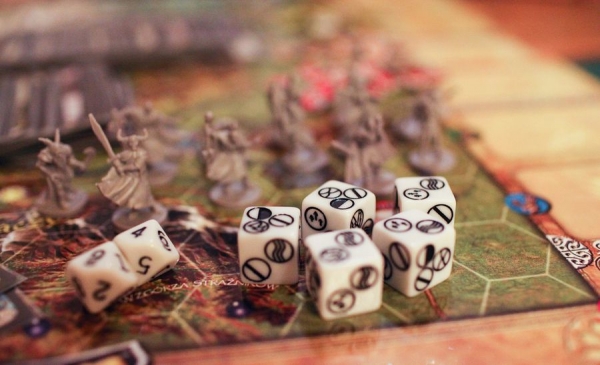
And it's that "scenarios played before" thing that gets me. I'm big on story in games. That's why I lean toward thematic games over their Euro counterparts. I tend to want my memories of a play to be something I could relate with a beginning, middle, and end; not just a recounting of how I scored two more points than my opponents. Modern legacy-style games, like Gloomhaven, have fully embraced that concept and I think Runebound was a minor bridge in getting to that level when it comes to adventure games. Formerly, expansions for this style of game were add-ons. You could play Talisman with the Dungeon and the City and the Timescape, but it was still Talisman. Runebound's focus as its small and large expansions moved along shifted from "still just Runebound" to "still Runebound, but in a much different way." The small expansions largely change how you interact with cities and with the endgame. But the large expansions each have a story to tell of their own. The map changes (land bridges in Island of Dread, sandstorm in Sands of Al-Kalim, etc.) based on how the story progresses. The way you proceed through the game goes from killin' stuff and gettin' stuff to completing quests that shape the game and tell a story about your time in the jungles of Zanaga or wherever else. These are stories that can be told that go beyond just the competition with other players but, instead, get a lot closer to something like Tales of the Arabian Nights, where the scoring is almost incidental to what you did and where you went. That, to me, is what an adventure game is all about.
So, that's a dive into the base game of Runebound. In part II, I'll talk about the six small "quest" expansions which, again, range from mostly endgame-focused, like Avatars, to changing the way the game functions, like Cult of the Rune and The Cataclysm, and the class decks. In part III, I'll go over the four large expansions and how they transform the experience.
 Games
Games How to resolve AdBlock issue?
How to resolve AdBlock issue? 